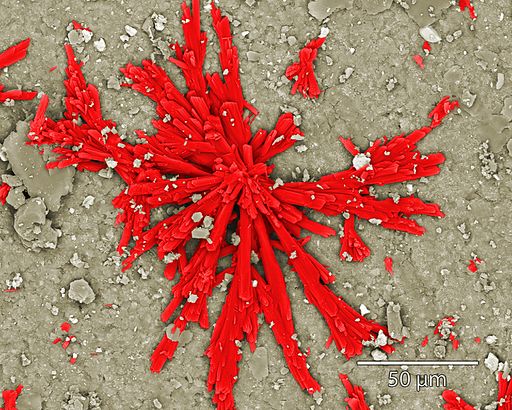🔬 Running the Numbers
One of the challenges we all currently face is how to think about what is happening as our world is suddenly turned upside down. This is especially the case since we tend to have certain blind spots when it comes to understanding numbers, as well as the way things like exponential growth really operate. In a way this is a special case of cognitive biases, which we might call math blindness.
Here are two very different approaches to addressing math blindness The first one is an article that deals with the mathematics of exponential growth as it applies both to the spread of the Corona virus known as COVID-19 and the still looming issue of climate change. The second is the website of an artist named Chris Jordan whose work directly addresses the problem of making very large numbers seem more real to us. Many of the problems we face as a society have to do with the fact that the scale of human life and its impacts is so vast that we cannot get our heads around it. Jordan’s work helps us to actually see what is happening in a stark and compelling way.
What the Coronavirus Curve Teaches Us About Climate Change
The coronavirus pandemic-sadly-has introduced or reintroduced many people to the concept of an exponential curve, in which a quantity grows at an increasing rate over time, as the number of people contracting the virus currently is doing. It is this curve that so many of us are trying to “flatten” through social distancing and other mitigating measures, small and large.
Chris Jordan – Running the Numbers
Chris Jordan’s online photography gallery.


I thought this was fascinating because before reading this I was not aware that t Corona virus could tell us something about climate change. I think the article did a great explaining how the human mind does not easily grasp the nature of exponential growth as well.
correct me if I am wrong but I don’t think the article is implying that coronavirus directly influences climate change. But that crunching the numbers in these topics and coming up with a strategic and scientific way to reduce those risks to the human population.
I thought these photographs were really eye-opening. The pictures that stood out to me the most were birds in the first picture and children’s blocks that depicted how many US students drop out of high school each year. I had no idea that this amount was so large. I also got a laugh out of the barbie doll and breast augmentation one.
I agree, this article had a lot to offer it was very informative and had great pictures. I was unaware of covids effects on the earth.
This article is incredibly interesting! I didn’t know that the corona virus could teach us a thing or two about global warming. I knew that there were places in the US that were going to be seriously affected bu these chances but I was shocked to see just how many were going to run into issues. The pictures that were included on the bottom of the article really put some things into perspective.
Both of these articles were very eye-opening and taught me things I wasn’t aware of before. I was also blown away by the portrait of the birds by Chris Jordan. So much detail.
Both of these articles included a ton of great details and a lot of images. All of the pictures that were included were really interesting to look at and I enjoyed it a lot.
The first article did a great job explaining what makes the nature of pandemics and essentially the nature of extinction, with the concept of exponential growth. “Even if growth looks mild in the moment- think of the earliest segments on an exponential curve-… it will soon enough be severe.” This statement gave me chills down my spine. I truly believe exponential growth is an important concept to grasp, especially with the numbers we can apply it to today. This can adhere to waste consumption, the pandemic, and unfortunately the depiction of the estimated number of birds that die in the US everyday from agricultural pesticides.